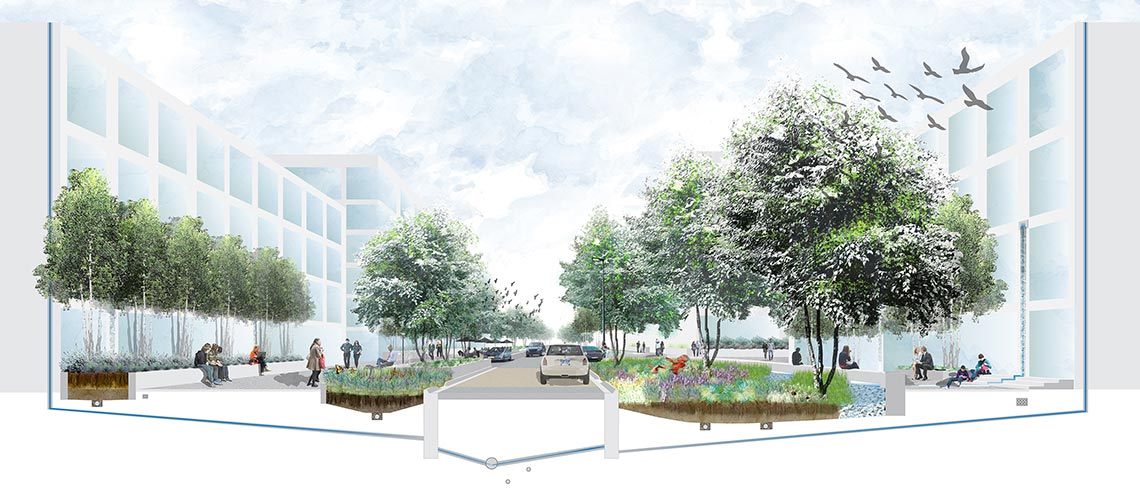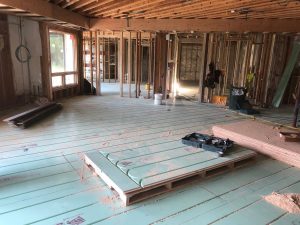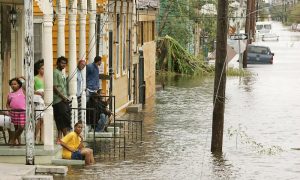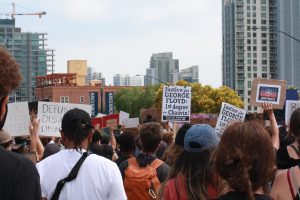Stormwater runoff continues to be a pressing environmental issue especially as we, now more than ever, are facing the challenges of climate change in our world. Stormwater management refers to the processes and practices taken in order to mitigate the effects of stormwater runoff, which we are seeing increasing amounts of as precipitation and storm events are becoming excessively frequent. In traditional practices, the contaminated runoff water is disposed of into systems which then discharge this waste into nearby rivers and streams. As environmental scientists have started to use innovation as a driving force towards sustainability, rethinking traditional stormwater management infrastructure has provided green solutions which are able to create substantial environmental, economic, and social benefits.
There have been many different solutions proposed which are all able to cater to different climates and scales. These systems, including rain gardens, green roofs, permeable pavement and rain barrels, can all be combined into a larger system which is able to provide a more flexible stormwater solution: a green street.
Green streets act as a method of stormwater infrastructure to help capture, drain and most importantly, treat water runoff. Whereas other systems aim to collect rainwater so that it can be safely disposed of into a river or stream, green streets aim to collect and treat the water so that it is less hazardous when disposed of. But there’s more – the treatment of this water proves to be extensive in its environmental implications, which include improving water quality, air quality, reducing urban heat islands, creating wildlife habitat and promoting species diversity just to name a few.
In June 2018, Vermont developed a Green Streets Guide which was to be followed and implemented all throughout the state. In their guide they outlined three main pillars which they hoped would be addressed through the installation of green streets: water treatment, mobility and placemaking. 1) As mentioned before, the green streets were designed to treat any toxic runoff that would otherwise have been discharged into nearby waterways. 2) Redesigning the streets under the Guide also allows the implementation of road features for people of all ages and physical abilities. For example, this can include benches and trees which help to provide spaces and shade for pedestrians and those with physical constraints. 3) What differentiates a green street from other methods of sustainable management systems is that they are able to also provide recreational spaces. This helps to improve the overall quality of life, health of residence and bring vibrance to a community. In terms of economic considerations, implementing green streets can improve the appearance of a neighborhood which can help rise property values, showing again how extensive the benefits of green streets are. The Vermont Green Streets Guide is able to provide detailed information on the multiple environmental, social and economical benefits of green streets, and acts as a valuable resource for other states, counties and cities to turn to.
Portland is known for its green streets, establishing the trend for many other American cities to follow. Northeast Siskiyou Street was the first of Portland’s green street projects, which was designed to help runoff through using landscaped curb extensions. While this project is one of the more simpler street retrofits, it is able to provide treatment while maximizing filtration through using four separate compartments to filter water through. The design also fits in well with the landscaping of the surrounding neighborhood, using low planters to blend into the grass, which also provides neighbors an opportunity to engage with their physical environment by watering and taking care of the plants.
The project cost $20,000 in total, which was estimated to be more than what would be usual for a project this size. Data collected after a year of observation showed that the curb extensions were effective in infiltrating and treating runoff and required little to no maintenance, with occasional weeding and cleaning of the forebays.
As innovators, we look to cater to the future with greener solutions, the green street presents itself as an exciting product to turn to. Using resources such as the Vermont Green Street Guide and taking inspiration from Portland’s many street retrofitting projects, can help to drive the implementation of green streets even further, creating the many environmental, social and even economic benefits as observed from these examples. Knowing and understanding the larger effects of green street implementation is especially valuable as we search to improve sustainability within our own work at SHAC, through using the resources and platforms we have now to advocate for change within our built environment.
“NE Siskiyou Green Street Project .” Portland Oregon , Apr. 2005, www.portlandoregon.gov/bes/article/78299.
“Vermont Green Streets Guide .” Vermont Community Forestry , June 2018, vtcommunityforestry.org/sites/default/files/pictures/vermontgreenstreetsguidefinal.compressed.pdf.




